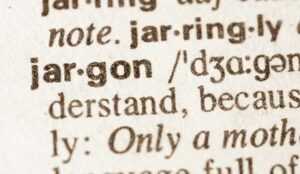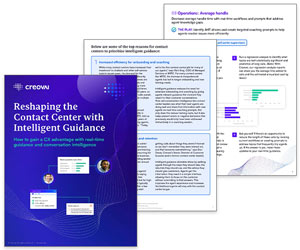Are you underestimating a customer’s in-queue patience? After all, if you only track how long abandoned callers lasted on hold, you’ll miss all the patient folks who made it through!
Here’s the thing about customer patience: it’s not just a nice-to-know metric. It’s the difference between accurate Erlang forecasting and throwing darts at a board while wearing a blindfold.
When you get customer patience wrong, everything else falls apart – your service levels, your staffing models, and your operational costs.
To help set the record straight, we asked Doug Casterton, Workforce Optimization Consultant, to share three proven statistical methods that’ll give you the real picture of how patient your customers actually are…
Why Traditional Patience Measurement Falls Short

Most contact centres I’ve worked with make the same fundamental error. They look at abandoned calls, calculate the average time to abandonment, and call it a day. That’s like trying to understand a football match by only watching the players who got sent off.
The reality is more nuanced. Customer patience isn’t a single number. It’s a complex behaviour pattern influenced by time of day, queue position, announced wait times, and even the weather.
When you ignore the customers who stayed and completed their journey, you’re missing critical data that could improve your forecasting accuracy.
So how do you turn it around? Try one of these statistical methods instead…
3 Statistical Methods to Decode Customer Patience
Method #1 – Survival Analysis “Understanding the Complete Customer Journey”
What Survival Analysis Really Tells You
Survival analysis is your secret weapon for understanding customer patience behaviour. Originally developed for medical research to study time until death or disease recurrence, it can be adapted brilliantly for contact centre environments.
Think of it this way: instead of just looking at when patients died, we’re examining when customers “died” to our queue…
But crucially, we’re also studying everyone who survived the experience. This gives us a complete picture of patience distribution across your entire customer population.
The method focuses on probability distributions of customer patience duration, accounting for both observed abandonments and what can be referred to as “censored data”: customers who stayed until they were served.
This distinction is absolutely critical because these patient customers represent successful interactions that traditional methods completely ignore.
The Benefits
- True patience distribution revelation – You’ll discover that patience isn’t normally distributed. Often, you’ll find distinct customer segments: the quick-exit group who abandon within 30 seconds, the moderate patience group who’ll wait 2-3 minutes, and the determined group who’ll stick it out for 10+ minutes.
- Confidence intervals for decision-making – Unlike simple averages, survival analysis provides confidence bounds around your estimates. This is crucial when you’re making staffing decisions that affect hundreds of thousands of customers.
- Hidden patience patterns – I’ve seen operations discover that their “impatient” customers actually had higher lifetime value. They abandoned quickly because they had alternatives, not because they didn’t care about the service.
How to Implement Survival Analysis
The practical implementation requires systematic data collection:
- Start by capturing complete timeline data for every customer interaction – Not just the ones who abandon. You need entry time, exit time (whether through service or abandonment), and any relevant customer characteristics.
- Apply the Kaplan-Meier estimator to build survival curves – This statistical method handles the censored data elegantly, giving you accurate probability estimates for customer patience at each time interval.
- For more sophisticated analysis, use Cox regression models when you want to understand how different factors influence patience – I’ve used this to discover that customers calling about billing issues have fundamentally different patience patterns than those seeking technical support.
Critical Mistakes That Kill Accuracy
- Don’t ignore censored data from customers who completed service – This is the biggest error I see: treating these customers as if they had infinite patience instead of recognizing they had enough patience for your actual service delivery.
- Avoid assuming uniform patience across customer types – Your VIP customers, new customers, and repeat callers all have different patience profiles. Segment your analysis accordingly.
- Ensure sufficient sample sizes – With survival analysis, you need enough events (abandonments) in each time interval to generate reliable estimates. I typically recommend at least 100 abandonments per segment you’re analysing.
Method #2 – Time Series Analysis “Capturing Patience Rhythms”
Understanding Temporal Patience Patterns
Customer patience isn’t constant throughout the day, week, or year. It pulses and flows like a river, responding to external pressures and internal rhythms that most workforce managers never consider.
Time series analysis examines patience variations across temporal patterns, identifying cyclical and seasonal patience behaviours that can dramatically improve your forecasting accuracy.
I’ve seen contact centres where Monday morning patience is 40% lower than Friday afternoon. Imagine the staffing implications if you ignore that pattern!
What Time Series Analysis Reveals
The insights from temporal patience analysis consistently surprise operations teams:
- Intraday patience variations – Customers calling during lunch hours often have different patience levels than those calling first thing in the morning. This makes sense when you consider their mindset and available time.
- Seasonal patience shifts – During holiday periods, customer patience often increases because people expect delays. However, right before major deadlines, patience plummets.
- Business cycle impacts – Economic pressures, competitor actions, and even major news events can shift customer patience patterns in predictable ways.
- Dynamic parameter opportunities – Instead of using static patience assumptions in your Erlang models, you can create dynamic parameters that adjust based on time patterns.
Implementation Methodology
- Segment your abandonment data by relevant time intervals – Hourly for intraday patterns, daily for weekly cycles, monthly for seasonal trends. The granularity depends on your volume and the patterns you’re investigating.
- Apply decomposition techniques – To separate trend, seasonal, and cyclical components from random noise. I prefer using STL (seasonal and trend decomposition using Loess) for its flexibility with irregular patterns.
- Build forecasting models using ARIMA or exponential smoothing methods – The key is creating patience forecasts that align with your volume forecasts. There’s no point having mismatched assumptions.
Avoiding Time Series Pitfalls
- Don’t treat patience as static across all time periods – This is perhaps the most expensive mistake in workforce management – using average patience values when patience clearly varies by time.
- Ensure sufficient granularity in your analysis – Weekly averages might hide crucial daily patterns that affect staffing decisions.
- Account for external factors – Like marketing campaigns, system outages, or competitive actions that create one-off patience impacts.
- Resist overfitting models to historical anomalies – The goal is identifying sustainable patterns, not memorizing every fluctuation in your historical data.
Method #3 – Wait Time Threshold Analysis “Finding the Breaking Points”
Identifying Critical Patience Moments
Wait time threshold analysis is your microscope for examining customer behaviour at specific patience breaking points.
Rather than looking at overall patterns, this method studies abandonment rates at specific wait time intervals to identify exactly when customers reach their limits.
This approach examines customer behaviour patterns at critical patience points, revealing the specific thresholds where abandonment spikes occur. These insights are pure gold for queue management and service level target setting.
Strategic Value of Threshold Analysis
The business impact of understanding patience thresholds is immediate and measurable:
- Precise abandonment spike identification – You’ll discover that abandonment doesn’t increase linearly with wait time. Instead, there are specific moments – often around 30 seconds, 2 minutes, and 5 minutes – where abandonment rates jump dramatically.
- Service-specific tolerance levels – Different types of enquiries have different patience thresholds. Technical support calls often have higher patience than billing enquiries, but the specific thresholds vary by business.
- Optimal service level targeting – Instead of arbitrary service level targets, you can set targets based on actual customer behaviour. Why aim for 20-second answer times if your customers don’t start abandoning until 45 seconds?
- Queue management intervention opportunities – Understanding threshold points helps you design intelligent queue management strategies, like offering callbacks right before major abandonment spikes.
Practical Implementation Steps
- Create meaningful wait time buckets based on your business context – I typically start with 0-15 seconds, 15-30 seconds, 30-60 seconds, 60-120 seconds, and then larger intervals beyond that.
- Calculate abandonment rates for each threshold using both absolute numbers and percentages – The absolute numbers show volume impact, while percentages reveal behavioural patterns.
- Plot abandonment probability curves to visualize the relationship between wait time and abandonment – These curves often reveal surprising patterns that tables of numbers miss.
- Compare thresholds across different customer segments, call types, and time periods – The segmentation often reveals actionable insights for targeted interventions.
Common Implementation Errors
- Avoid using arbitrary or excessively wide time buckets – Buckets like “0-2 minutes” are too broad to capture meaningful threshold behaviour.
- Don’t assume linear abandonment progression – Customer psychology creates step-function increases at specific psychological barriers.
- Consider queue position psychology effects – Customers who can see they’re “next in line” behave differently than those buried deep in the queue.
- Account for announced wait time impacts – Similar to the above, when customers hear “your estimated wait time is 3 minutes,” their patience behaviour changes compared to unknown wait scenarios.
Combine Methods for Maximum Accuracy
What is even better is when you combine these three approaches. Each method reveals a different view of customer behaviour, and together they create a complete picture that transforms forecasting accuracy.
I’ve implemented integrated approaches where survival analysis provides the foundational patience distribution, time series analysis adds temporal dynamics, and threshold analysis identifies intervention opportunities.
The result is workforce planning that adapts to real customer behaviour rather than simplified assumptions.
Start With the Approach That Matches Your Analytical Maturity
Based on my experience implementing these methods, I recommend starting with the approach that matches your current data availability and analytical maturity:
- If you have good historical data but limited analytical resources, begin with threshold analysis. It’s the most straightforward to implement and provides immediate actionable insights.
- For organizations with strong analytical capabilities, survival analysis offers the most comprehensive foundation for understanding customer patience behaviour.
- Time series analysis works best when you have sufficient historical data and clear temporal patterns in your business.
The Future of Patience Measurement
Customer expectations continue evolving, and our measurement methods must evolve accordingly. The rise of digital channels, artificial intelligence, and omnichannel experiences creates new challenges and opportunities for understanding customer patience.
Machine learning algorithms are beginning to identify patience patterns that traditional statistical methods miss. However, the fundamental principles remain unchanged…
You need complete data, appropriate analytical methods, and systematic implementation to drive meaningful improvements.
Written by: Doug Casterton, Workforce Optimization Consultant and Co-Founder of Right Time Right Place
If you are looking for more advice on improving your customer service, read these article next:
- 10 Essential Building Blocks for Earning Customer Trust
- 10 Ways to Make Customers Feel More Valued
- 10 Tips for Creating Outstanding Customer Interactions
Author: Doug Casterton
Reviewed by: Jo Robinson
Published On: 8th Jul 2025 - Last modified: 13th Nov 2025
Read more about - Customer Service Strategy, Customer Experience (CX), Customer Service, Doug Casterton, How to Calculate, Service Strategy, Top Story








































